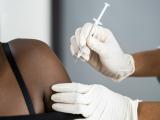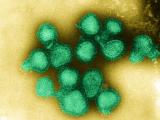Jan 26, 2010 (CIDRAP News) The United States has made little progress in the past year in improving its ability to blunt the impact of a biological weapons attack, says a new report from the commission Congress established to assess the nation's efforts to prevent and respond to terrorism.
The Commission on the Prevention of Weapons of Mass Destruction Proliferation and Terrorism gives the government an "F" for a lack of effort to improve the nation's capability to respond to biological attacks quickly enough to prevent mass casualties.
The government gets better grades for some other activities related to bioterrorism preparedness, but the report says the weakness in rapid response capability is "the most significant failure" the commission found. The panel is chaired by former Senators Bob Graham of Florida and Jim Talent of Missouri.
"Unfortunately, there is no national plan to coordinate federal, state, and local efforts following a bioterror attack, and the United States lacks the technical and operational capabilities required for an adequate response," says the report.
The document is a report card on the federal government's progress in following the recommendations the panel made in its first report, "World at Risk," issued in December 2008. The group says the Obama administration has shown much greater urgency in dealing with the threat of nuclear terrorism than in coping with biological threats.
In its earlier report, the seven-member commission predicted that weapons of mass destruction (WMD) would be used in a terrorist attack somewhere in the world by the end of 2013 and that the weapon used is more likely to be biological than nuclear. The panel also said al Qaida is capable of developing and using bioweapons.
Critical response deficiencies
The new report says the nation is seriously deficient in each of the general capabilities needed for coping with a biological attack: rapid detection and diagnosis, providing actionable information to government leaders at all levels and to the general public, having good supplies of medical countermeasures, quickly distributing countermeasures, treating and isolating the sick, protecting the well with vaccines and prophylactic medications, and, in cases such as anthrax, cleaning up after an attack.
The lack of progress in developing vaccines and medicines needed to reduce the impact of an attack is especially troubling, the report says. The cost of developing medical countermeasures needed to meet the threats identified by the Department of Homeland Security (DHS) is estimated at $3.4 billion a year for the next 5 years, but the appropriation for fiscal year 2010 is less than a tenth of that, it states.
The commission asserts that the government has made some progress in preventing biological attacks, but "it is simply not paying consistent and urgent attention to the means of responding quickly and effectively so that they no longer constitute a threat of mass destruction."
The report argues that each of the last three presidential administrations has been slow to recognize and respond to the bioterrorism threat. But it says the danger "has grown to the point that we no longer have the luxury of a slow learning curve."
The panel asserts that the response to the H1N1 influenza pandemic illustrates the preparedness gap.
"As the delayed response to H1N1 has demonstrated, the United States is woefully behind in its capability to rapidly produce vaccines and therapeutics, essential steps for adequately responding to a biological threat," the report states.
Without explaining its reasoning, the commission asserts that "H1N1 came with months of warning." Yet the pandemic peaked before most Americans had access to vaccine, it adds.
Other bioterror-related marks
The panel graded the government on its response to several other bioterrorism-related recommendations besides the one on rapid response to an attack.
On a recommendation to tighten oversight of high-containment laboratories, the government earned a D+.
"Regulatory fragmentation remains the norm," the report says. "There are too many agencies at the federal, state, and local levels that regulate pathogens, in sometimes conflicting ways."
Many groups agree on the need to drop duplicative regulations and group pathogens into categories, the commission states. "Most agree that the highest risk pathogens, deserving the most stringent controls, number closer to eight than the 80 pathogens currently on the Select Agent List."
The Senate Homeland Security Committee has approved a billthe "WMD Prevention and Preparedness Act of 2009"to implement the commission's recommendations in this area, the report says. It urges that this legislation be quickly enacted.
The Obama administration gets an "A" from the commission for following its advice to conduct a comprehensive review of the domestic program to secure dangerous pathogens. But it adds that steps to carry out the conclusions of the review are needed now.
On a recommendation to improve domestic and global disease surveillance networks, the government gets a "C." The Obama administration has developed plans to expand global disease surveillance networks, but more work is needed at home, the commission says.
"Currently our government cannot determine how many people have contracted a disease even during a pandemic such as H1N1, which was foreseen for many months," it states.
The panel also awarded the government:
- A "B+" for holding productive international meetings to prepare for the Biological Warfare 7th Review Conference in 2011
- An "A" for developing a strategy for improving "bioforensic" capabilities.
DHS oversight
Elsewhere in the report, Congress comes in for sharp criticism for failing to reform its oversight of the DHS. The commission says appropriations and oversight for the agency are spread across more than 80 committees and subcommittees.
"Oversight of DHS should be removed from legacy committees and focused within the House and Senate Homeland Security Committees," the report recommends.
See also:
Full text of the commission's report
http://i.cdn.turner.com/cnn/2010/images/01/26/report.card.pdf



















